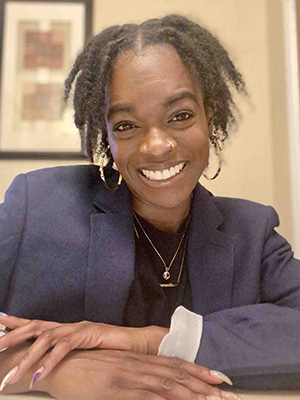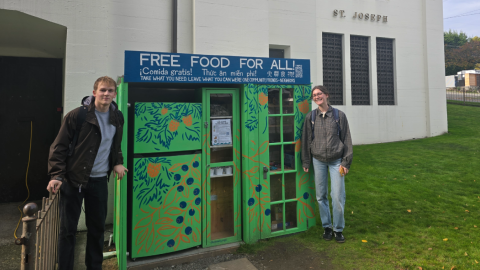
Washington State is experiencing an increasing number of extreme heat events due to climate change. The 2021 Pacific Northwest “heat dome,” for example, resulted in 441 deaths and became the deadliest weather-related disaster in Washington’s history.
Black, Indigenous and people of color (BIPOC) communities are at an increased risk for extreme heat exposure due to underlying health inequities and historical marginalization, which necessitates a centering of their voices in preparing for future extreme heat events.
In spring 2022, a team of University of Washington researchers was awarded a Tier 1 Population Health Initiative pilot grant to examine how BIPOC youth specifically perceive their risk to extreme weather events.
Led by Cassandra Jean, a postdoctoral scholar with the UW Department of Environmental & Occupational Health Sciences (DEOHS), this project utilized key informant and focus group interviews to develop future strategies to protect against extreme heat exposures affecting BIPOC populations.
“This research centered these communities’ experiences and made sure that they felt heard. We wanted to incorporate them into these conversations so they could act as long-term climate heroes in their own neighborhoods,” explained Jean.
Other investigators include DEOHS Assistant Professor Nicole Errett, DEOHS PhD candidate Amber Khan; Graciela Flores, undergraduate in the UW School of Public Health; and Jamie Donatuto, community environmental health analyst for the Swinomish Indian Tribal Community.
Understanding responses to extreme weather among BIPOC youth
Despite BIPOC youths being at an increased risk for negative physical and psychological impacts following exposure to extreme weather–related events, very few community response plans incorporate their perspectives into resiliency approaches.
“Instead of just throwing that blanket label over them and calling them ‘vulnerable,’ we need to figure out ways to incorporate them in these conversations, especially since they’re the ones that are going to be receiving the end of whatever actions we do now,” emphasized Jean.
.jpg)
In summer 2023, Jean and the research team conducted interviews with government and community leaders from organizations that worked with Black, Indigenous and Latine populations. These discussions explored current responses to extreme weather events, the needs of affected communities and the barriers to building disaster resilience.
After these interviews, the researchers engaged Black, Latine and Coast Salish tribal community members between the ages of 12 and 17 with focus groups to discuss questions regarding extreme heat exposures, perceived health risks and current resource needs.
“We asked questions like, ‘How did you respond to the extreme heat wave that happened in 2021? How are you understanding these things? What does this mean for you in the future?’” said Jean. “We wanted them to think about their experiences and use what they’ve noticed happening within their neighborhoods to figure out solutions for their community.”
Youth are climate-aware but restricted in decision-making power
These discussions were then transcribed and analyzed for common themes. “For findings, we saw that the young folks are very aware of their circumstances and understand the dynamics of climate change and its impacts on their community,” shared Jean.
“However, frequently, they felt restricted in their decision-making power or felt that there was no substantial progress they could make.”
After nine months of research, Jean and their team have concluded their project and are currently working to publish a manuscript of their findings and disseminate a community packet back to the organizations they worked with.
“This community packet is a one-stop shop of all the resources the youth need to interact with climate change, whether that’s YouTube videos, games or answers to different questions. We included recommendations from both the youth members and youth leaders,” explained Jean.
Making climate adaptation efforts more inclusive
“My goal with this project was to connect everyone and everything, understanding that there is synergy and intersections in our lived experiences,” reflected Jean. “Young folks, especially those with marginalized identities, have so much knowledge and ideas but often lack resources to act. So, I wanted to make sure they felt centered and validated, and I felt that after speaking to the young folks and youth leaders, we achieved that.”
“If folks are genuinely dedicated to helping marginalized communities, they need to approach it in a holistic, objective and collaborative way, a way that’s not extractive or potentially harmful,” stressed Jean.
“Meeting folks where they are and humanizing their experiences through culturally relevant and sensitive techniques can help support that particular community’s needs, promote more interest in climate change and its impacts and help to forward a more inclusive climate adaptation process.”
Adapted from the original post here.




